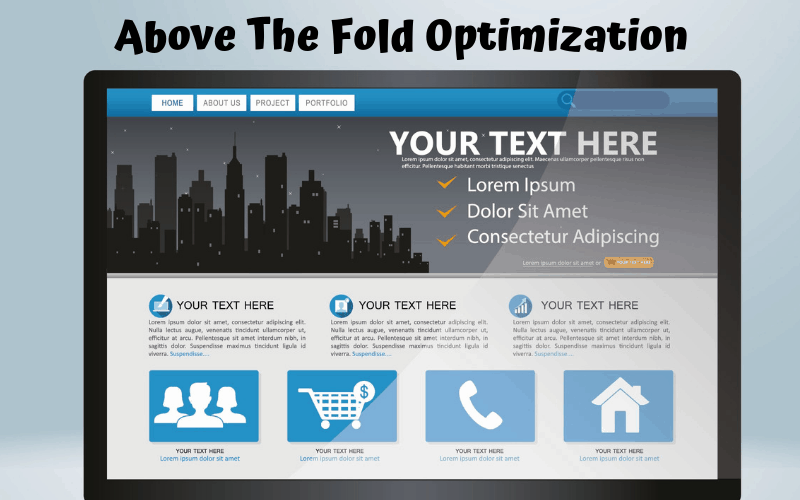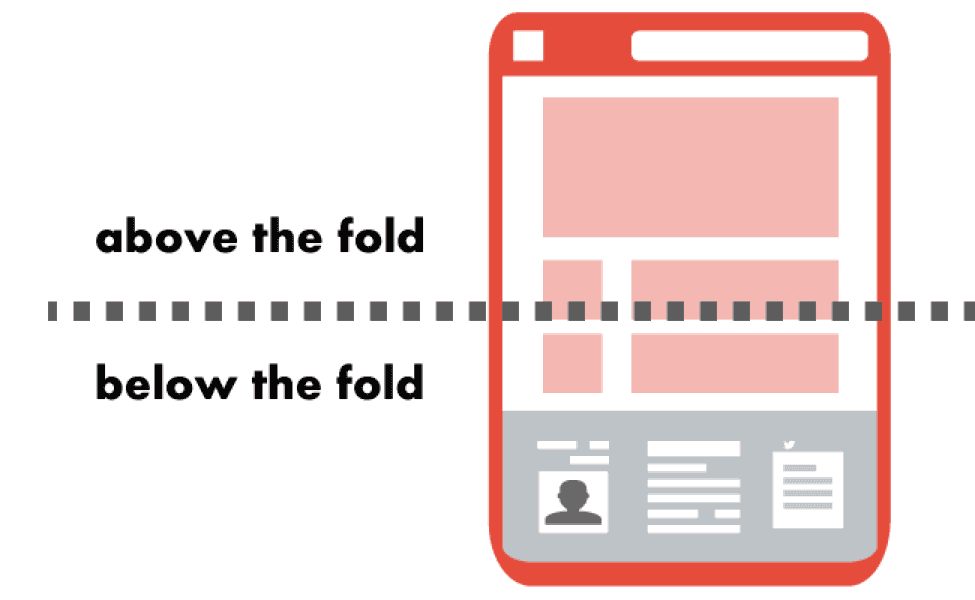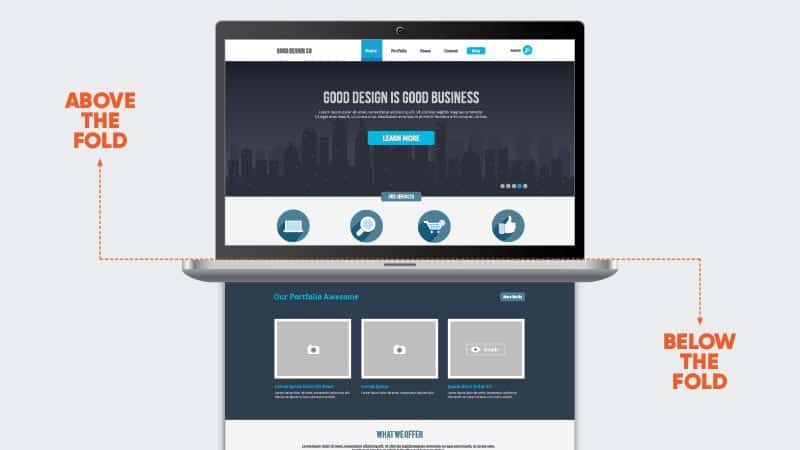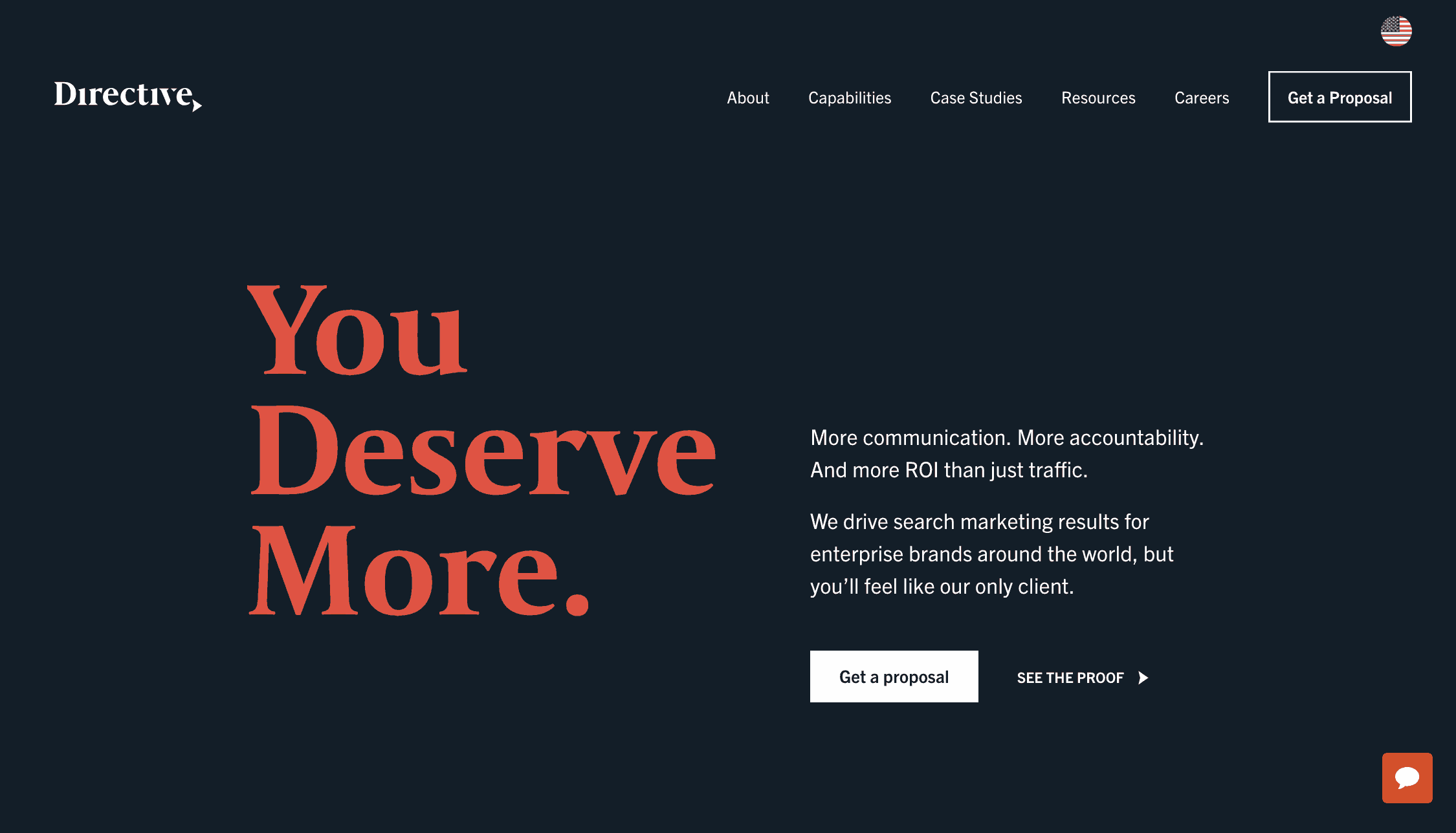Why is Understanding the Term “Above the Fold” Important?
Whether in print or online, the placement and layout of your content are important because it determines what your site visitor see first. When an Internet user first loads your webpage, everything you’ve placed above the fold is going to be the first thing they see.
If you have chosen content that is not relevant or interesting, chances are you’ll lose the user’s attention and they’ll leave your page in search of something else. With this in mind, you must treat the space above the fold as the prime location for certain pieces of content. Anything that is relevant, informative, and eye-catching belongs above the fold.

How is Above the Fold Measured On Desktop vs Mobile
Different websites will have different fold placements, so it is difficult to say definitively where the fold appears on every webpage. As there are a number of monitor sizes (think laptops vs. desktops), browser plugins, screen resolutions, and even screen types (think of the various sizes of smartphones and tablets), pinning down where the fold should be placed is almost impossible.
The best answer is that it varies depending on the screen you’re using and the screens your target audience is using. Some websites are suited to all screen types while others are not, and this can make a huge difference in how users interact with a business.
With all of this in mind, however, it is important to note that when determining where to place the fold on a webpage, most web designers find that the fold line is at approximately 600 pixels tall and 1,000 pixels wide.
This measurement translates well across the most common monitor and browser combination – 1024×786 pixels – i.e. how the average webpage looks when the window is maximized and there are no installed toolbars at the top.
To help you determine where the fold should land for your particular website, you can rely on your website’s analytics program. It should be able to provide data on which screen dimensions are the most common for your visitors so you can plan accordingly. Remember – though 1024×768 has been the most common dimension layout, new dimensions are rising every day and growing in popularity.
In fact, 320×568 and 360×640 are becoming more commonly used.
To decipher which dimensions are best for your website, play around a bit, consult your web analytics, and think about who your target audience is. If your audience is comprised of younger individuals who use social media and do most of their Interest browsing on their phones or tablets, you should make your site available on all screen types.






